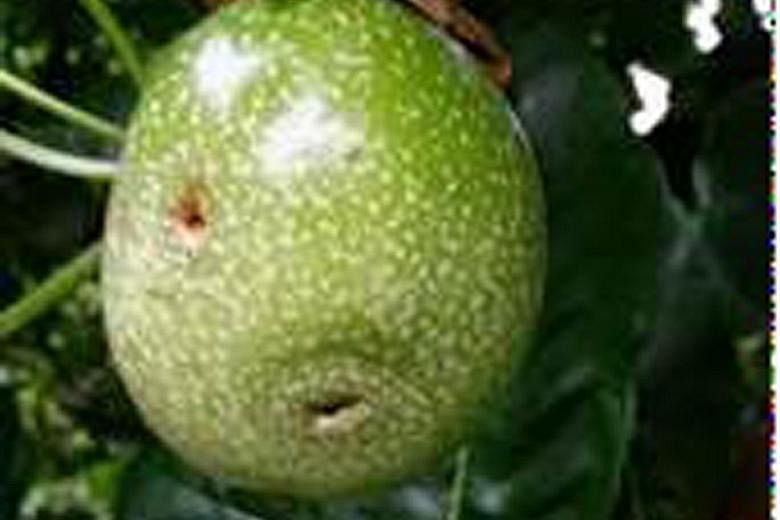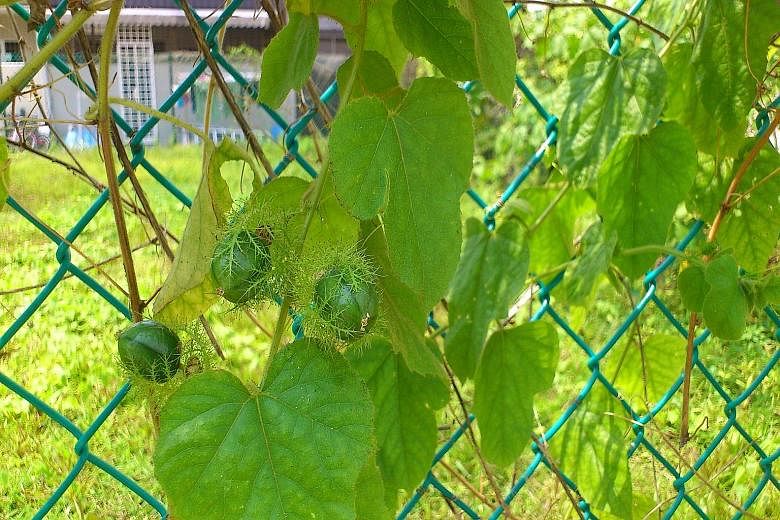Challenging to grow Treasure Flower in Singapore
I took this picture of a plant in Tenerife in Spain. I am unable to identify it, even after I searched the Internet. What is it?
Dr John Lim
It is commonly called Treasure Flower. Its botanical name is Gazania splendens or Gazania rigens. It is a member of the daisy family (Asteraceae). It is native to southern Africa and is sometimes sold in nurseries here.
It can be challenging to grow it in Singapore as it prefers well-draining soil and a drier climate with lower air humidity.
Rid fruit flies with homemade trap
My passionfruit plant is fruitful but I noticed its fruit has tiny pinholes on the skin. Is the fruit still edible? Is it attacked by pests? How do I get rid of them?
Esther Chan
Your plant looks like it has been attacked by fruit flies. The holes are the sites where adult female fruit flies have laid their eggs. The presence of maggots as well as the onset of disease (secondary infection) that may set in, due to the puncture holes, may make the fruit inedible.
To control the infestation level, wrap the developing passionfruit using plastic bags and set up a trap to attract the flies.
To make the trap, refer to the numerous resources that are available online. These usually require a clear plastic bottle.
First, make a hole in the bottle's cap and insert a piece of string or wire through it. Fashion one end of the string or wire into a hanger so that you can hang the trap. On the other end of it, attach a cotton ball soaked in fruit fly attractant, which is available from local nurseries.
Using a hot screwdriver, burn holes into the upper and middle portions of the bottle. Then fill the bottle with a small amount of diluted chemical pesticide such as cypermethrin. Finally, attach the cap to the bottle and hang the trap up.
The attractant will draw fruit flies to the bottle. After they enter the trap through the holes, they may fly to the base of the bottle where the pesticide is and drown.
Plant may be a species of passionfruit
What is this plant? I thought it was a soursop tree from the seed I planted but it has tendrils and seems to be a climber.
Yeoh Wan Mei
From your description and the features shown, such as the presence of tendrils and the appearance of the leaf, the plant may be a species of Passiflora, which is a type of passionfruit.
From the few edible species that are common in Singapore, the plant you have may be Passiflora laurifolia. Its common names include Yellow Water Lemon and Golden Bell Apple.
The ripe fruit are eaten fresh and used to make beverages.
For now, you may want to let it grow and let the plant flower and fruit.
The appearance of the fruit and flowers and more mature growth will make it easier to be identified.
Eat Passiflora foetida's fruit only when fully ripe
This plant has small fruit and a furry covering. The fruit changes from green to yellowish orange, which is when it tastes like passionfruit. It is sometimes sucked dry by birds or insects. What is this plant and is it edible or poisonous?
Sharon Eng
The vine is botanically called Passiflora foetida, a species of passionfruit. Its common names include stinking passionflower and love-in-a-mist. Its species name "foetida", which means "stinking" in Latin, refers to the strong odour emitted by damaged plant parts.
The fruit are safe to eat only when they are fully ripe, which is when they turn a dark orange.
The plant also has medicinal uses. It often occurs as a weed and appears on vacant land. Note that it also has important ecological uses in the urban landscape, where its leaves are food for caterpillars of the Tawny Coster butterfly.
Tonkin Creeper's blooms are edible
The Tonkin Creeper (botanical name - Telosma cordata,) is a vine that features heart-shaped green leaves and produces bunches of edible, orange flowers.
The fresh flowers or flower buds are sometimes sold in wet markets in Singapore, where they are either cooked to make a soup or fried with eggs. They are believed to be good for improving one's eyesight.
Its flowers are exceptionally fragrant in the evening or night. This makes it suitable for growing in a fragrant plants garden as well as a medicinal or food garden.
It grows best in well-draining soil and when exposed to full sun.
It is easily propagated from stem cuttings.
It is a climber, so you need to provide a trellis for it to climb on.
•Answers by Dr Wilson Wong, a certified practising horticulturist and founder of Green Culture Singapore (www.greenculturesg.com). He is also an NParks-certified park manager.
•Got a gardening query? E-mail it with clear, high-resolution pictures, if any, and your full name to stlife@sph.com.sg





